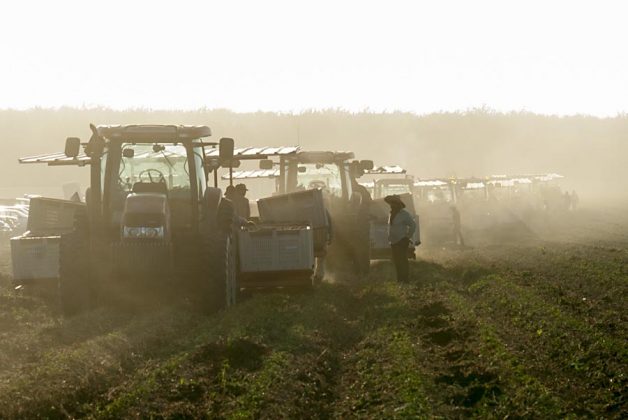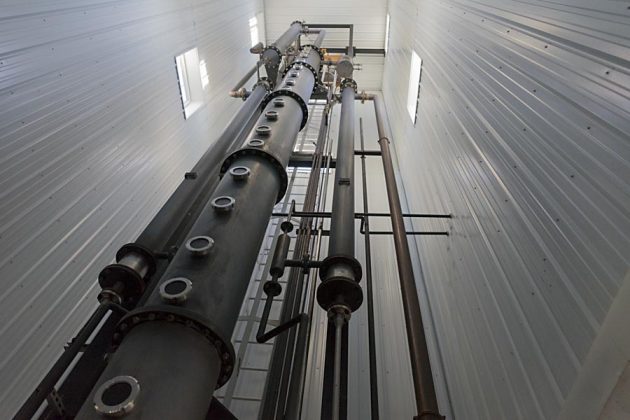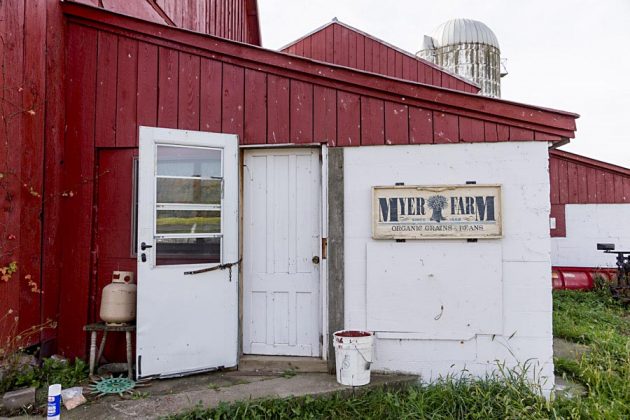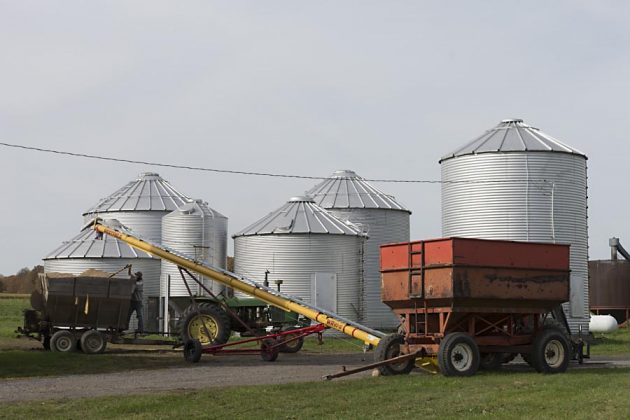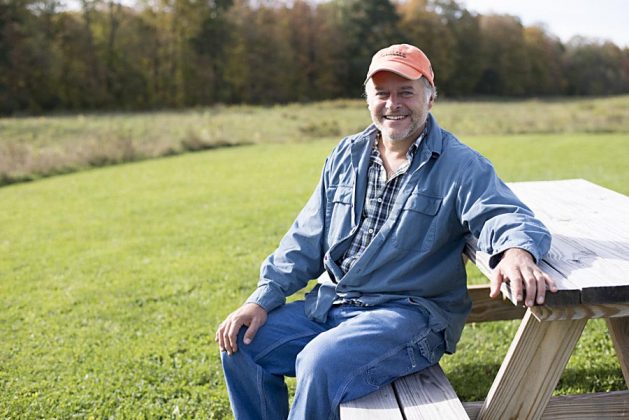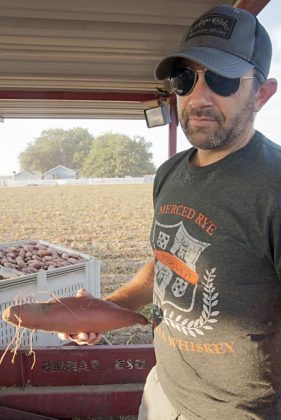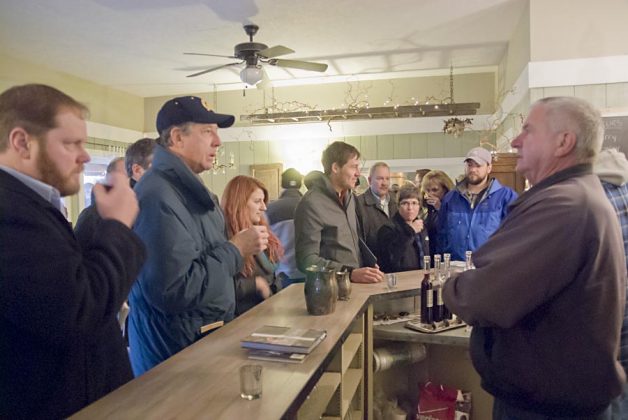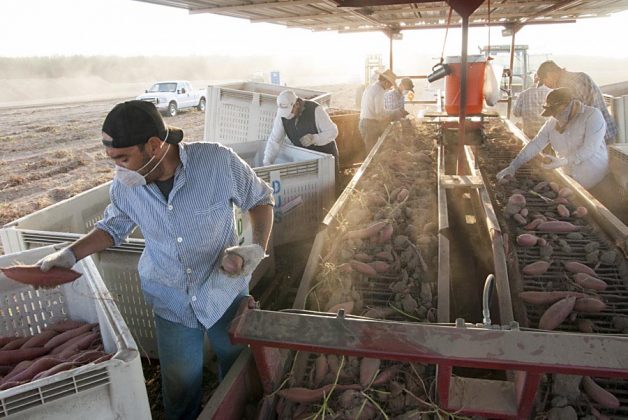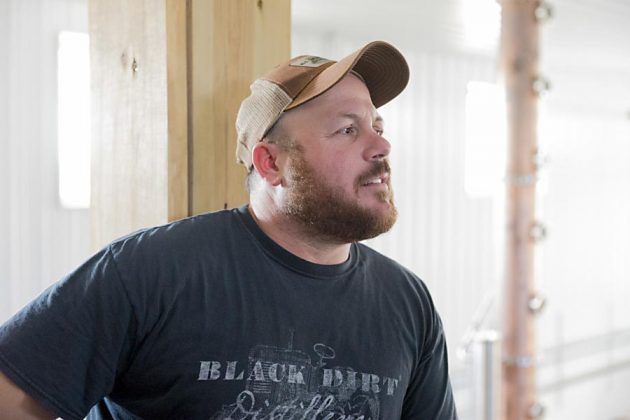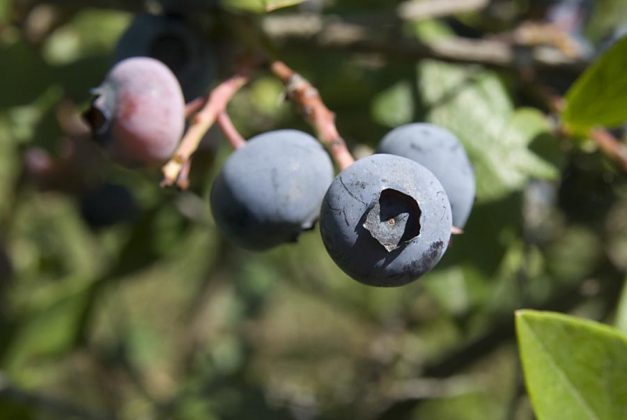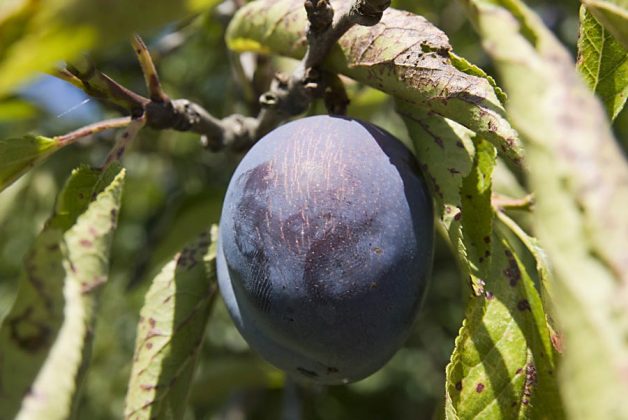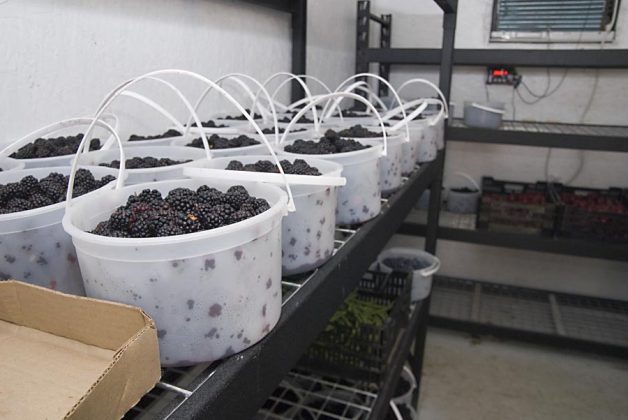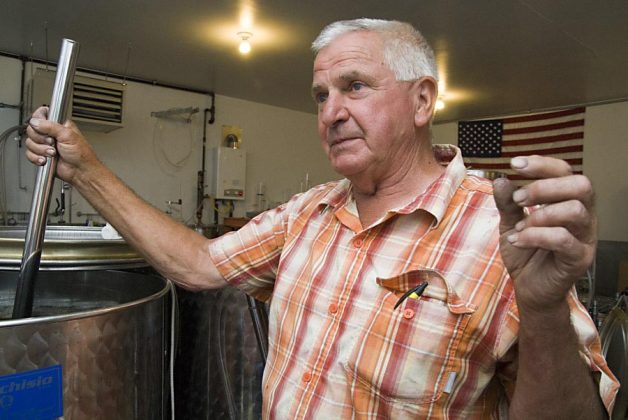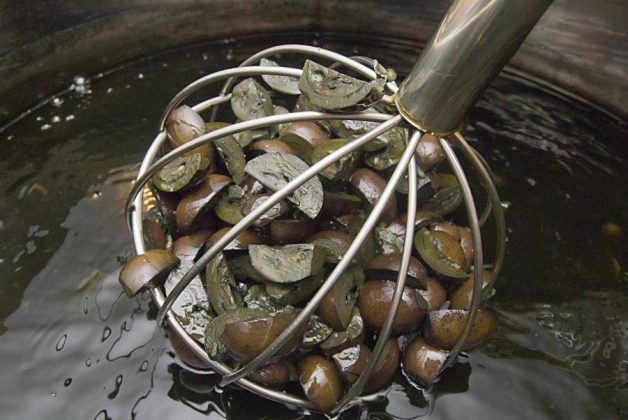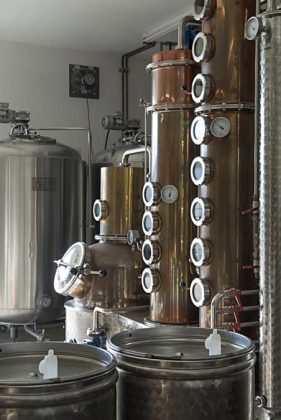Five years ago, it was farm to table. Today? Grain to glass. Such hashtag-friendly phrases may spread rapidly, but both often are often misused or misunderstood.
“I find ‘grain to glass’ curious, because there is literally nothing else you’re allowed to make whiskey from other than grain,” says Cheri Reese, co-founder and owner of Minnesota’s Far North Spirits. “Think about it—you don’t see wineries promoting ‘grape to glass.’ But ‘grain to glass’ is really shorthand for ‘we actually made this’.”
In a world rife with purposefully or negligently incorrect spirits labels, a term such as grain to glass—when used accurately—offers a helpful and important means of differentiation. “For us, grain to glass means that everything that goes into our bottles starts as a seed in the ground on our family farm,” says David Souza, owner and founder of California’s Corbin Cash Sweet Potato Spirits.
It’s clear though that many don’t use the term quite as strictly as Souza does, which adds even more heft to another term—estate distillery. “In comparison, an estate distillery grows the grain it uses in the production of its spirits,” Reese says.
“This involves careful selection of grain varieties, management of the crop—the amount of fertilizer you put in the soil to manage the protein levels—and husbandry of the soil,” Reese continues. “This distinguishes us because we are in complete control of the entire first half of the process, and can make adjustments and changes that affect flavor on the front end rather than attempt to correct for them in the second half of the process. The flavor is unique, distinguishable and we would argue, better, because we had control of each of these steps.”
As the presence of estate distilleries, and those producing estate products, ticks upward, the essence of what historically was always true is returning: that agriculture and distilling are inextricably linked.
“Consumers need to know about that connection because it will deepen their appreciation for what goes into a bottle,” says Joe Myer, president and master distiller of New York’s Myer Farm Distillers, “that the spirit pours out of the land, family, community and a way of life.”
Distilling & Agriculture Go Hand-in-Hand—
Or They Used To
Whether it’s whiskey or brandy or vodka or anything else, the process of distillation first requires something to be grown. Not much getting around that.
“Jim, Jamie and I were all farmers first and think it’s immeasurably valuable to showcase the link between agriculture and distilling,” says Nick Nagele, co-founder and vice president of Whiskey Acres in Illinois. “Not just for nostalgic purposes, but because we want to reconnect people to where their food—and beverages!—come from.”
Whiskey Acres is but one example of the growing number of modern distilleries that have sprouted from the soil the old-fashioned way, beginning with functioning farms.
Corbin Cash is another. “We’ve been farming the same land that produces the ingredients in Corbin Cash spirits for five generations, so when people drink our spirits they’re supporting a family distillery and a family farm,” Souza says.
And Myer Farm is another, with Myer’s ancestors founding the village of Ovid in 1793, farming in the town since 1810 and farming on the current plot of land since 1868. “Hence, rather than merely reflecting the basic elements of an estate distillery, our products reflect generations of sustaining and managing the land,” Myer says. “The drive to care for and produce from the land spirits that others can enjoy generates from our blood.”
Yet, the Link Was Lost
However, like oh so many things, that seemingly inextricable link between agriculture and distillation was lost to the ages. “I think the link between all consumables was lost with the urbanization of America,” says David O’Neal, owner and distiller of Washington’s Sidetrack Distillery.
“Once the ingredients in our spirits take liquid form, it’s easy to forget that most of those ingredients come from the ground right under our feet,” Souza says. “By acknowledging that path from the farm to the bottle, consumers can better understand the economic impact their choice of spirits makes on families like mine.”
That missing link is also seen by those with experience in the wine industry, not to mention food. “Coming from a wine and cider business which predated the distillery, I would actually say that distilling and agriculture is a link often forgotten for sure,” says Jeremy Kidde, managing co-founder of New York’s Black Dirt Distillery.
“The link between farmers and the final consumer isn’t just forgotten in distilling and agriculture—it’s a gap that exists everywhere,” Nagele says. “To oversimplify it, the industrial revolution and mechanization of farming allowed for families to leave the farm and start their lives in towns, cities and suburbs… Now that a majority of Americans are multiple generations removed from the farm, there’s not an active voice in most people’s lives telling them about ‘the what,’ ‘the how’ and ‘the why’ of where their food and beverages come from.”
As with all areas then, a little education goes a long way, and creating or finding that active voice is essential. “The link between distilling and agriculture is often forgotten for the same reason that the link between eating and agriculture is often forgotten—the consumer and the producer don’t really know each other,” Reese says. “But the more that consumers know about how their spirits are produced, the more evident that innate link becomes. Whiskey is made from grain, and so the connection has been made when consumers start asking questions like ‘Which grain? Whose grain? Grown where? Under what conditions?’ and so on.”
Evolving Consumer Attitudes
While the agricultural link to our food sources has been starting to return for some time, the spirits world has been lagging behind, until now. “Consumer attitudes, especially those of educated consumers, are moving in that direction across the board,” Souza says. “Think of the proliferation of farmers markets across the country. Restaurant menus routinely name the source of their ingredients—and not just fine dining restaurants. It’s started to trickle down to fast casual chains as well. In certain consumer segments, we’re seeing that same attention paid to spirits.”
It’s part of an overall shift in attitude and approach—and clearly, the more a consumer cares about the heritage breed of pig she’s eating and what farm it was raised on, the more likely she is to care about the traceability of the spirit she makes her cocktails with as well. “More and more, consumers want to know where their food and beverages come from,” Myer says. “This knowledge and appreciation of what they consume positively informs their lives by building community. Eating and drinking—two essential human activities—no longer are abstract necessities of life, but rather become meaningful personally and socially in ways that make life itself more meaningful. On a deeper level, I think it helps tie folks back to the earth.”
By appreciating where a spirit truly comes from, consumers can also appreciate the finer points of its ingredients and flavors: why particular grains or fruits might be used, how the soil and climate affects its taste, terroir.
“Using the products that flourish in our area is totally our raison d’être,” O’Neal says. “We distillers who actually grow and harvest the ingredients in our products are able to know the ripeness of the berry, fruit, nut or grain that we use, as we have followed it and nurtured it from the beginning.”
That’s a driving force for many estate distilleries and the consumers who buy their products. “It is a large part of what makes our products different and unique,” Kidde says. “Why seek out to make a product exactly like another one that already exists?”
Using an atypical ingredient adds even more importance to that farm connection, such as in Souza’s case with sweet potatoes. “First, not all sweet potatoes are distillable and each variety that is distillable produces its own flavor profile. It’s like grapes in that way,” he explains. “Second, sweet potato varieties actually change. They genetically get weaker over time and lose disease resistance, which causes the need to be changed out over time. To keep a consistent product, you need to have a thorough understanding of how the product behaves in nature and be able to adjust to these changes when they happen.”
In addition, there are personal passions, history and experience which may and should impact what ends up being grown, and hence, distilled. “It might be fun to make rum, but that’s not this place and that’s not us,” Myer says. “Since our climate and soil is excellent for both traditional and esoteric grains, as well as root vegetables and grasses, that are used in distilling, we generally don’t feel limited. What our land provides and what we distill is a whole of who we are and what we share in our goal to make life more beautiful and enjoyable for everyone—from field to flask!”
That’s not to say estate distilleries are the only good option, either, but rather that they add to the equation in a unique way. “Of course, distillers who are not operating estate distilleries are capable of making—and indeed do make—award-winning spirits, but what distinguishes estate distilleries from other distilleries is that consumers know exactly where the spirits that they drink are from—where they grew out of, the climate, the temperament, the character of the landscape,” Myer says. “The spirit is an expression of the land, and people appreciate that.”
Fertile Soil for Future Growth
It’s no coincidence that hotbeds for estate distilleries are not only where agriculture itself has strong roots, but also where favorable legislation has arisen. For instance, Kidde points to New York’s “state laws which encourage farm distilleries to use estate-grown and local ingredients.”
More legislative support across the country would surely be equally as beneficial. “New York state has recognized the economic vitality of distilling and has supported and passed legislation to facilitate distilling and the marketing of beverage alcohol,” Myer explains. “This, in turn, has allowed and encouraged today’s farmers to re-integrate distilling as a farming activity their ancestors and fore-farmers naturally embraced.”
As more consumers begin to appreciate such meaningful connections, and perhaps as more favorable laws are enacted, the more prevalent estate distilleries will become. “I think [consumers] are getting there,” Reese says. “Many consumers are familiar with estate wineries, and those estate wineries have done us all a service in getting us all to the point where we value the provenance of a spirit or wine instead of a simple brand name.”
As Reese gives credit to estate wineries, Nagele pays it to local foods. “The ‘local food’ movement has really taken root, and our guests understand and appreciate that when they come to Whiskey Acres, they can see the corn, wheat and rye that they will drink in a few years,” he says. “And we’ve had many guests who visited our first year and have come back year after year to taste the evolution of our spirits and sample what they saw growing two to three years ago… they truly appreciate the product and the craft of making it.”
In other words… #GraintoGlass #EstateDistilleries.

